Saturday, 11th August 2018
When booking today’s train Robert had several choices. Bear in mind that it is 45 miles between Debrecen [Hungary] and Oradea [Romania]. There is only one direct train between the two cities each day, all the other routes take one to two hours longer and involve one change. So he decided to get the 07:11 from Debrecen arriving in Oradea at 11:05. That is three hours 54 minutes which is an average speed of 11.5mph.
We had to get up at 05:45 this morning to give us enough time to do our ablutions, dress, pack and walk the 20 mins to the station. We were leaving the hotel before they started serving breakfast, so we had collected our packed breakfasts from reception last night.
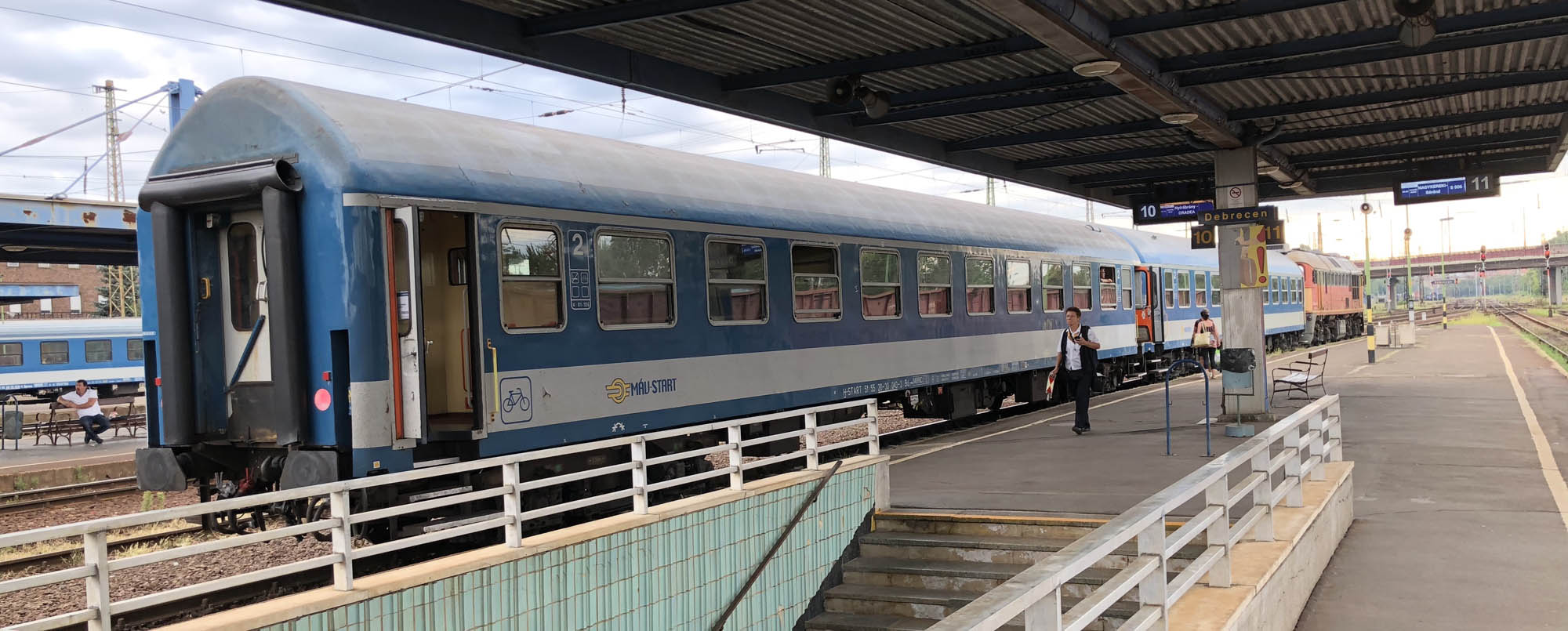
Just 30 minutes into our train journey the compartment door opened and we were asked for our passports by the Hungarian authorities. Romania, like the UK is not in the Schengen zone of the EU. The train was stationary for 30 mins while all the formalities took place. Then we were off. Ten minutes later we stopped again for the Romanian passport checks. This time the border officer took our passports and wandered off down the train. Thirty minutes later, after a period of some anxiety, we were reunited with our passports and the train started off. It appeared as though we were only 2 of 4 foreigners on the train. It was at this point that Robert checked his watch and found that we had also crossed an international time zone as 1 hour had automatically been added. So, actually, if you take into consideration the 2 x 30 minute stops and the time difference then the train journey was only 1hr 54mins [23.7mph]. Not bad for an intercity international train.
One of the reasons that we enjoy rail travel, as opposed to flying, is that you can sit back, look out of the window, and get a view of life in the country you are visiting. Our train today trundled along slowly, stopping as and when to let passengers on and off. Sometimes the stops were just a road, sometimes a derelict station and occasionally a well-maintained station with lawns, plants and a uniformed station master.
One quater of the population of Romania live and work abroad, sending home a proportion of their income. Prior to WWII Romania was the second largest agricultural producing country in Europe. Looking out of the window of the train you can see the poverty now and understand why so many move abroad. We worry after Brexit about having no fruit pickers. Romania worries that they have no fruit pickers now. But the fields are full of sunflowers and sweetcorn. The roads have no tarmac. The buildings are run down.
Oradea…
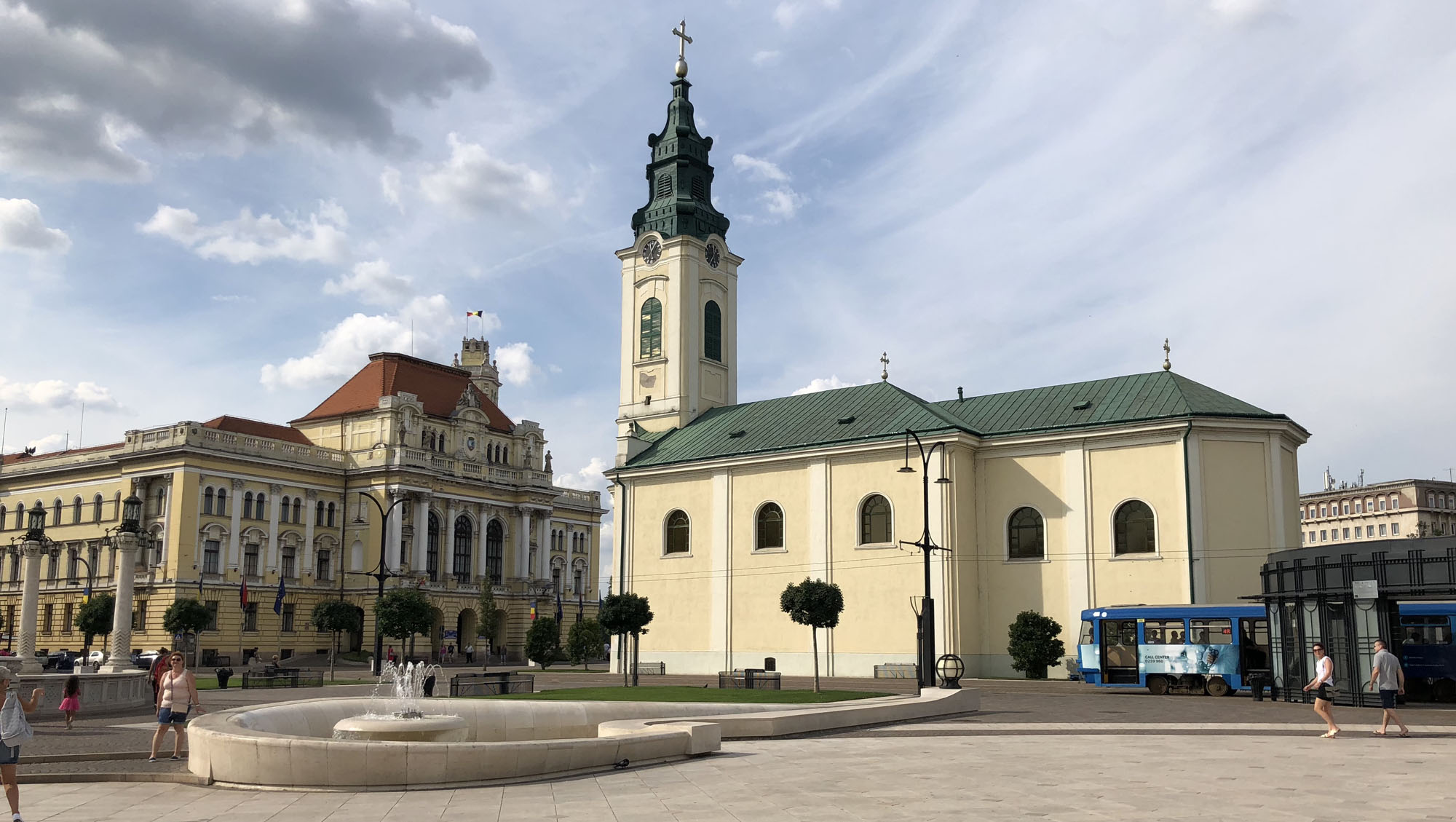
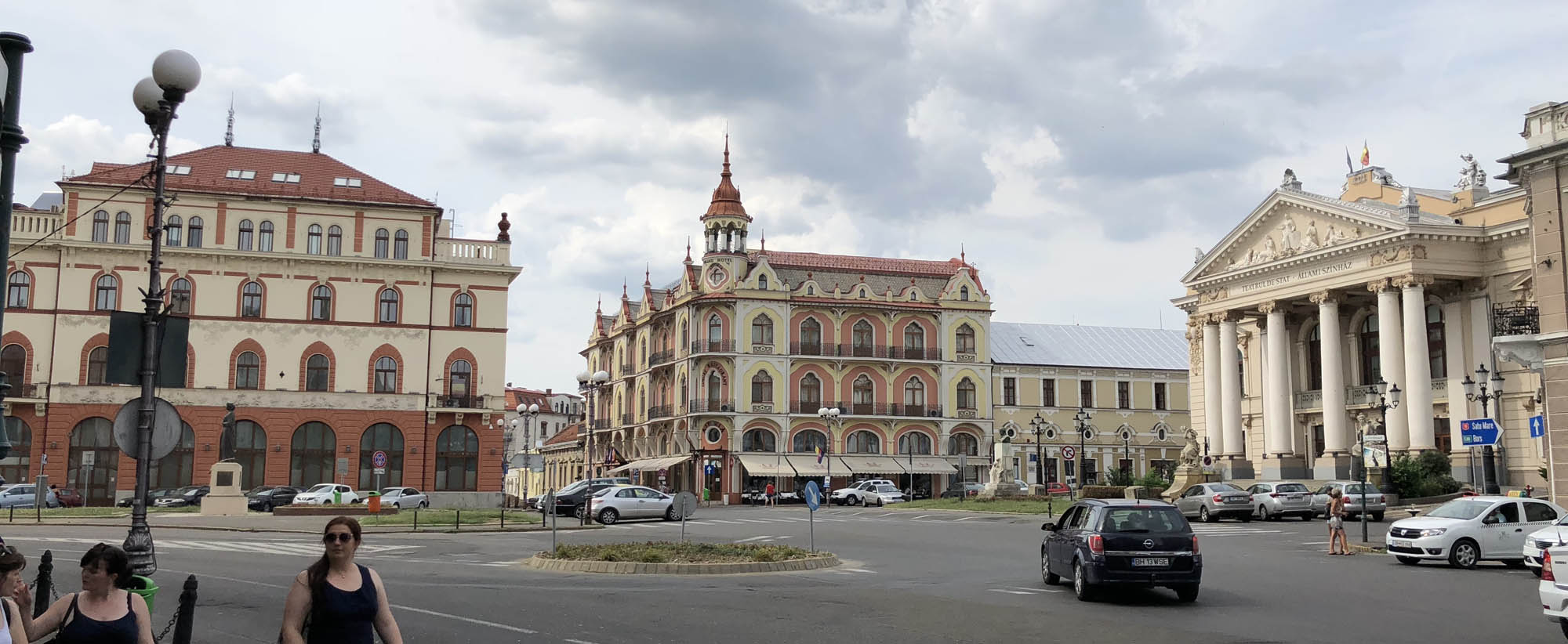
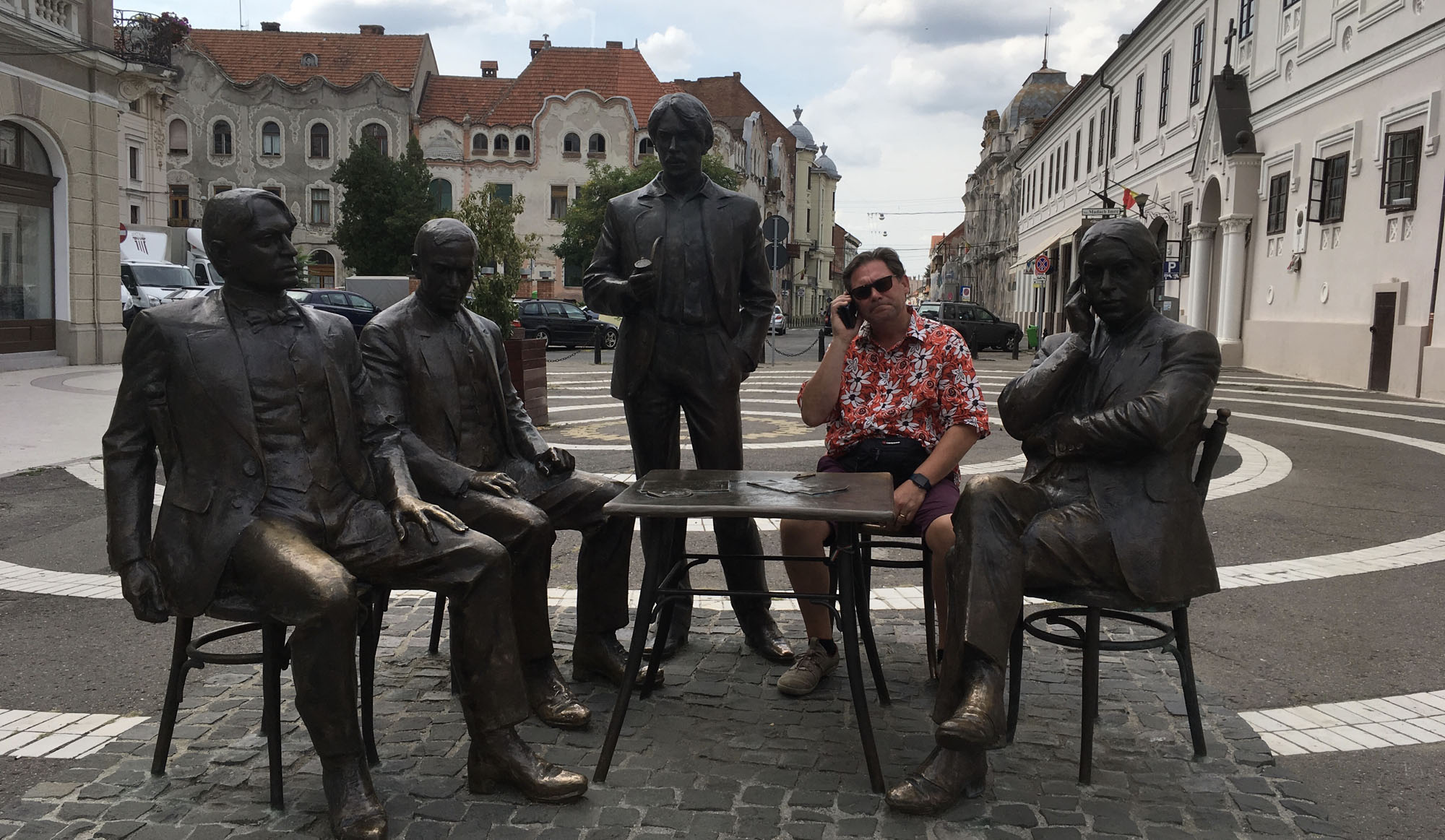
… is said to be typical of Romania and is certainly a city of contrasts. A lot of money is clearly being invested in urban regeneration. The juxtaposition of the restored buildings with the neglected; as well as of the modern utilitarian style of the communist buildings with the elegance of the Secession and Art Nouveau architecture is striking. In some streets walking under balconies with blown render seems foolhardy, even when they are wrapped in netting to protect the passing pedestrians below from falling debris.

Plata Unirii boasts many of the notable landmarks including City Hall; the Greek – Catholic Episcopal Palace; the Roman Catholic Saint Ladislau Church; the Church of the Moon (also known as the Church of the Assumption of Mary) and the Black Hawk Palace. The two sides of the Black Hawk Palace are linked by a beautiful renovated art nouveau shopping mall with extensive stencilling on the walls where it seems alternate shops are either open or vacant.
The Black Hawk Palace . . .
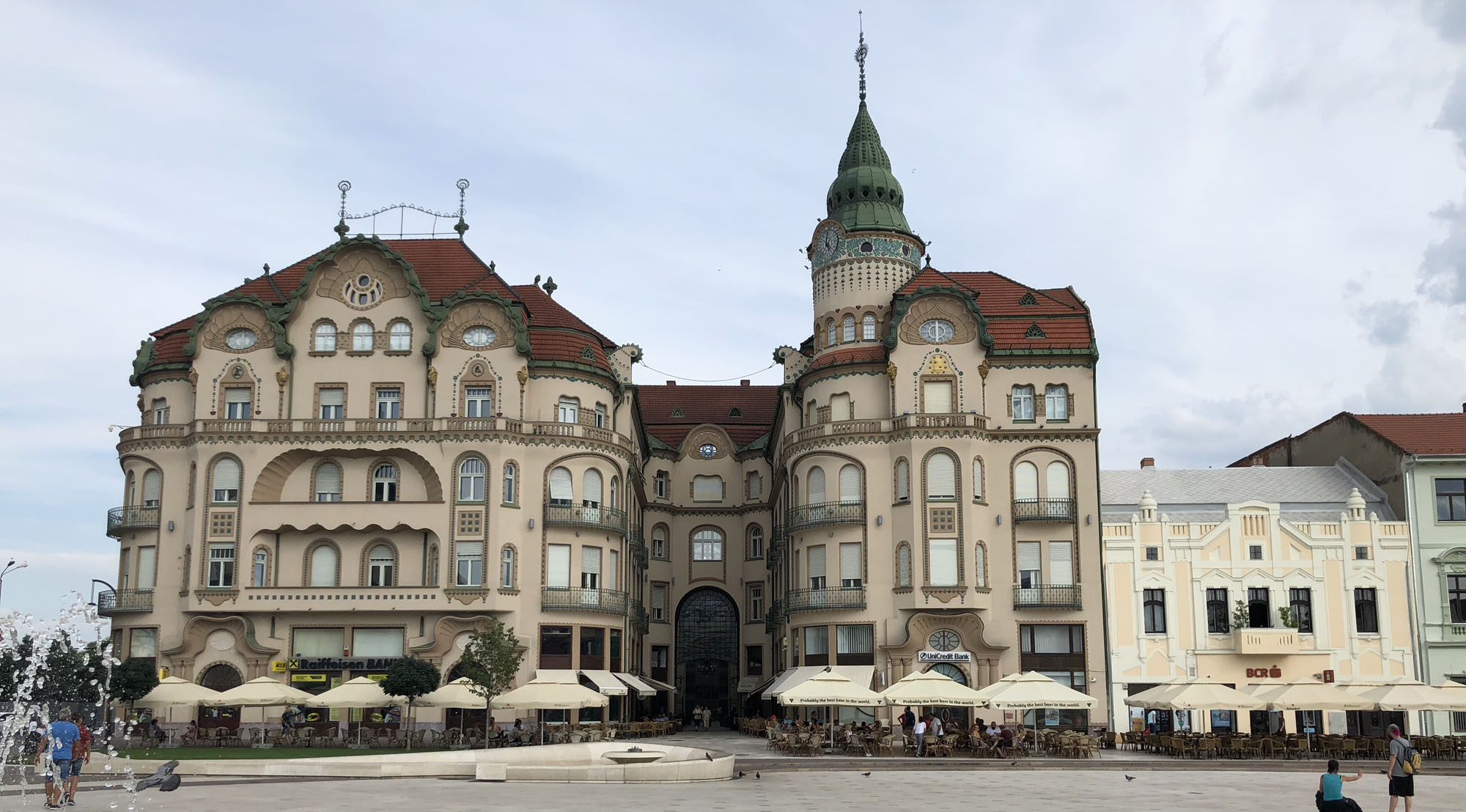
. . . and arcade.
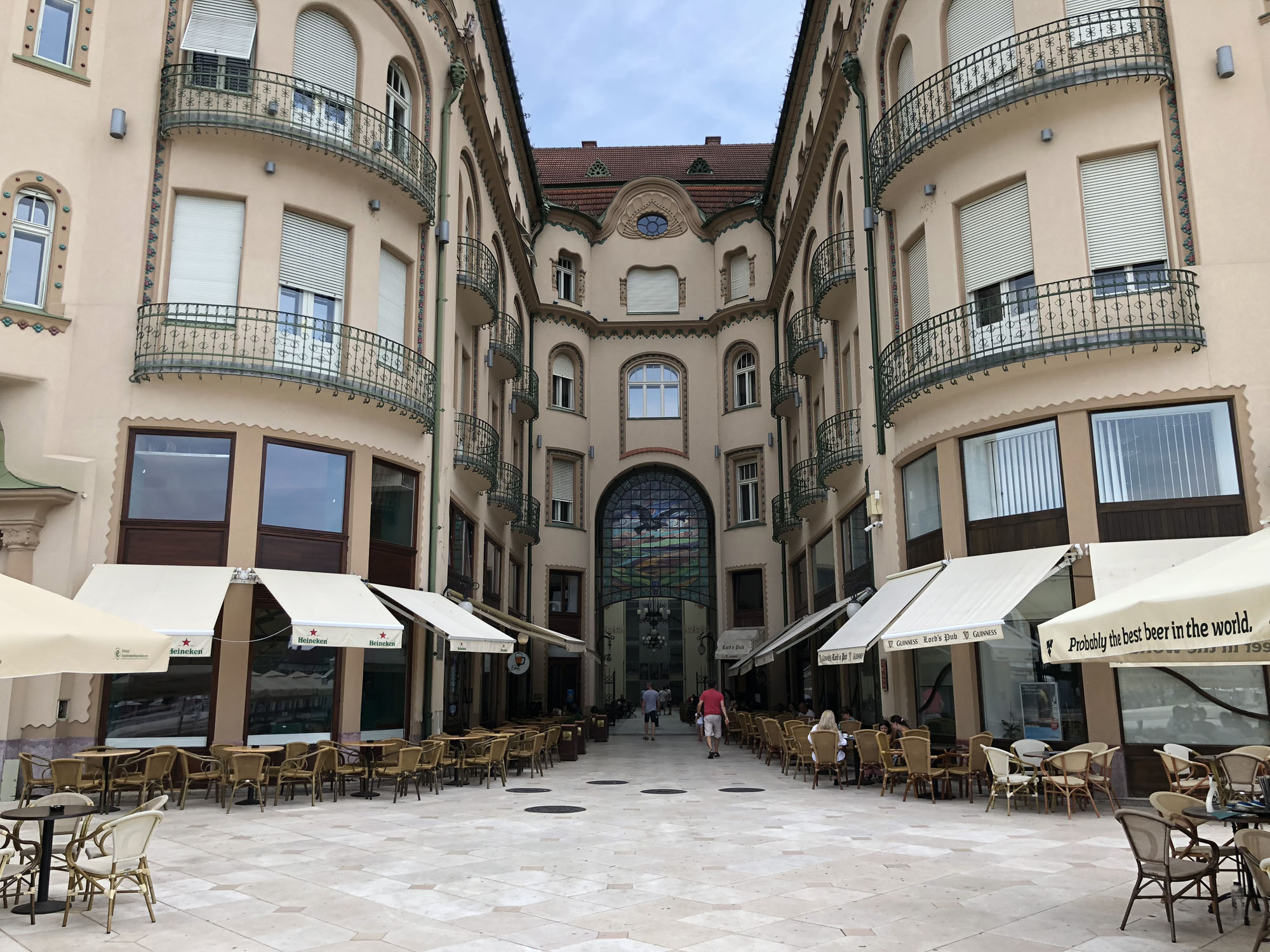
We took time to enjoy the view of the many lovely buildings around the square whilst making sure to keep hydrated in the hot weather. Robert couldn’t decide between a soft drink and a beer so opted for both on the basis that it doubled his fluid intake.
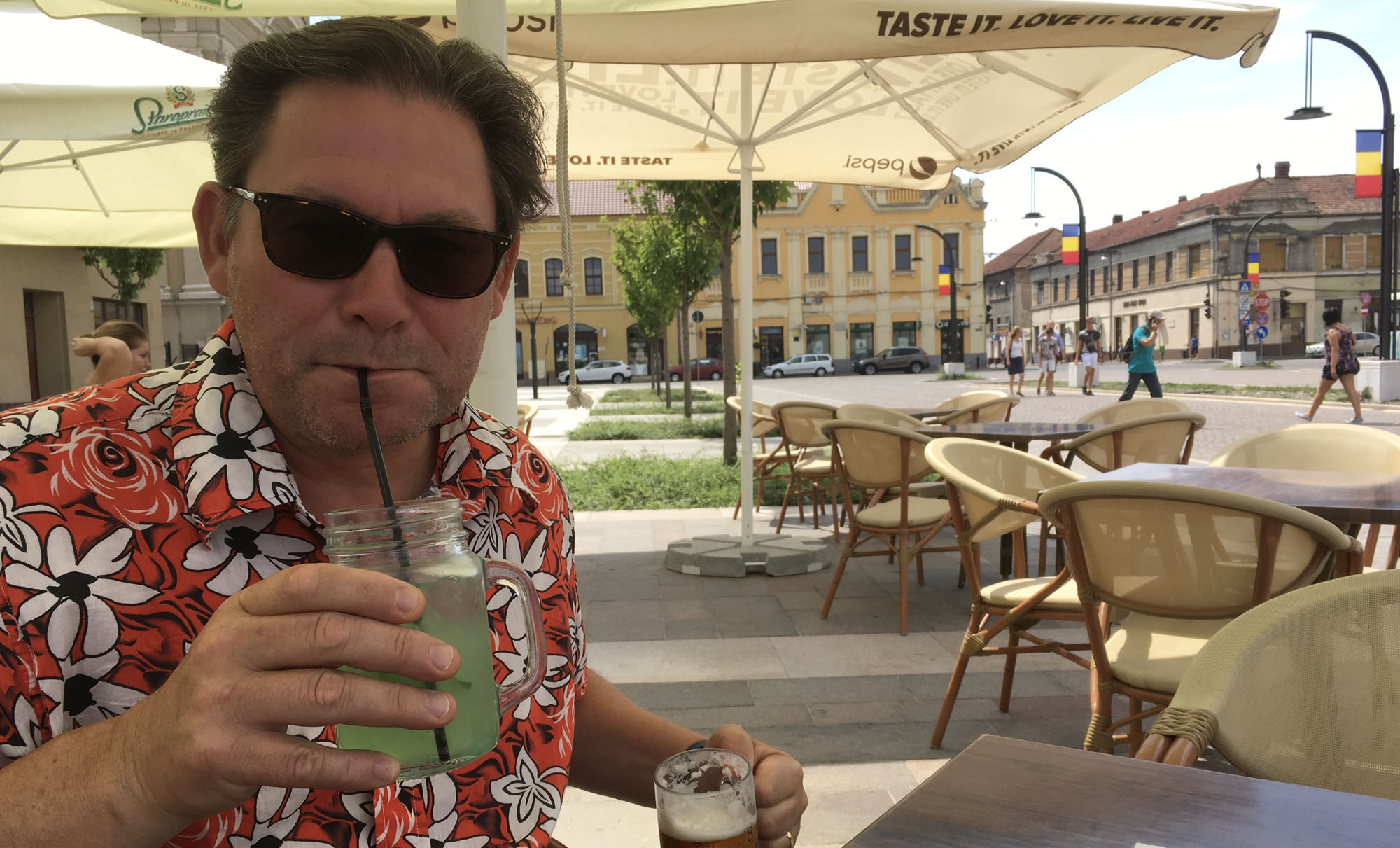
There are several equally attractive bars and cafes around the square with seating under umbrellas, but a bit like choosing a queue at the supermarket, we felt we had opted for the wrong one when the waiter told us it could take twenty minutes to prepare Matilda’s caffee frappe.
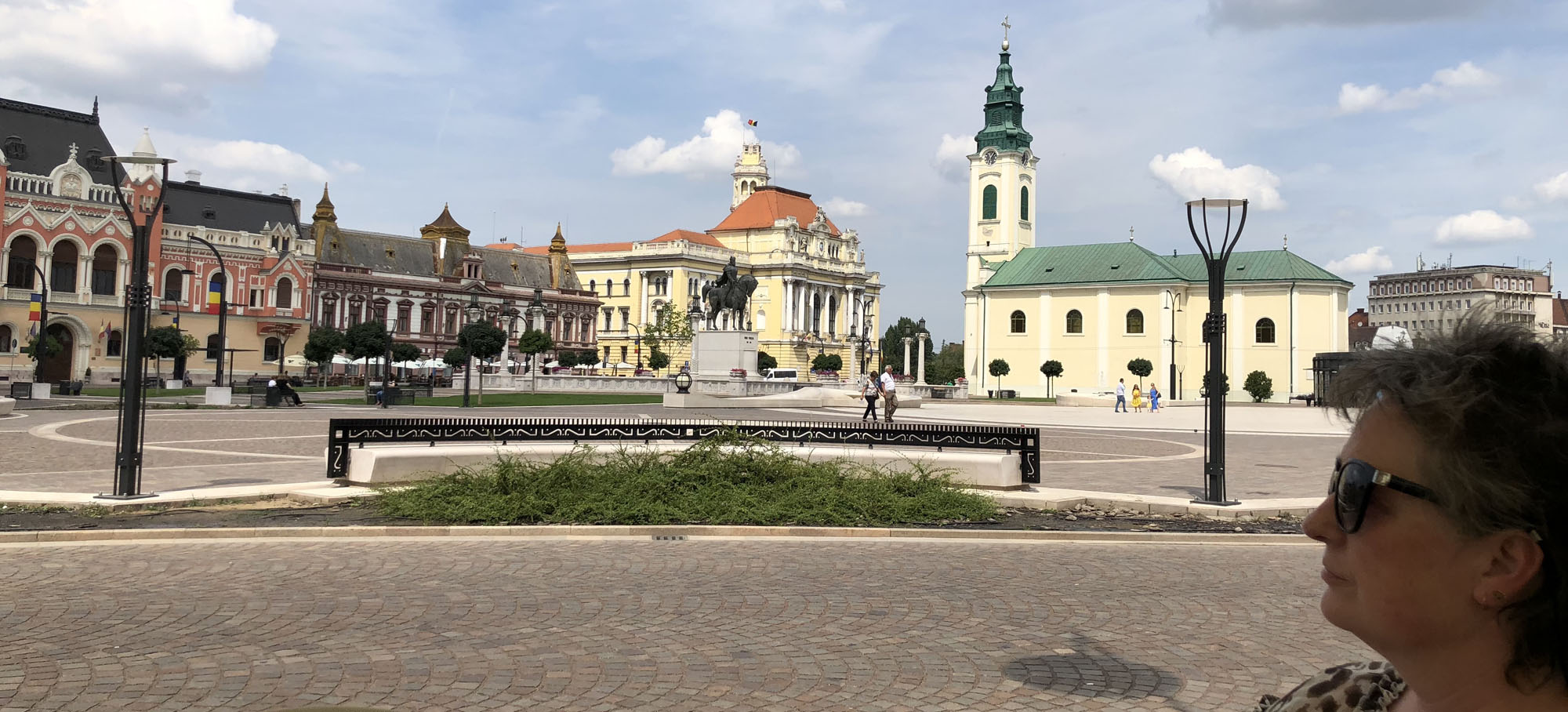
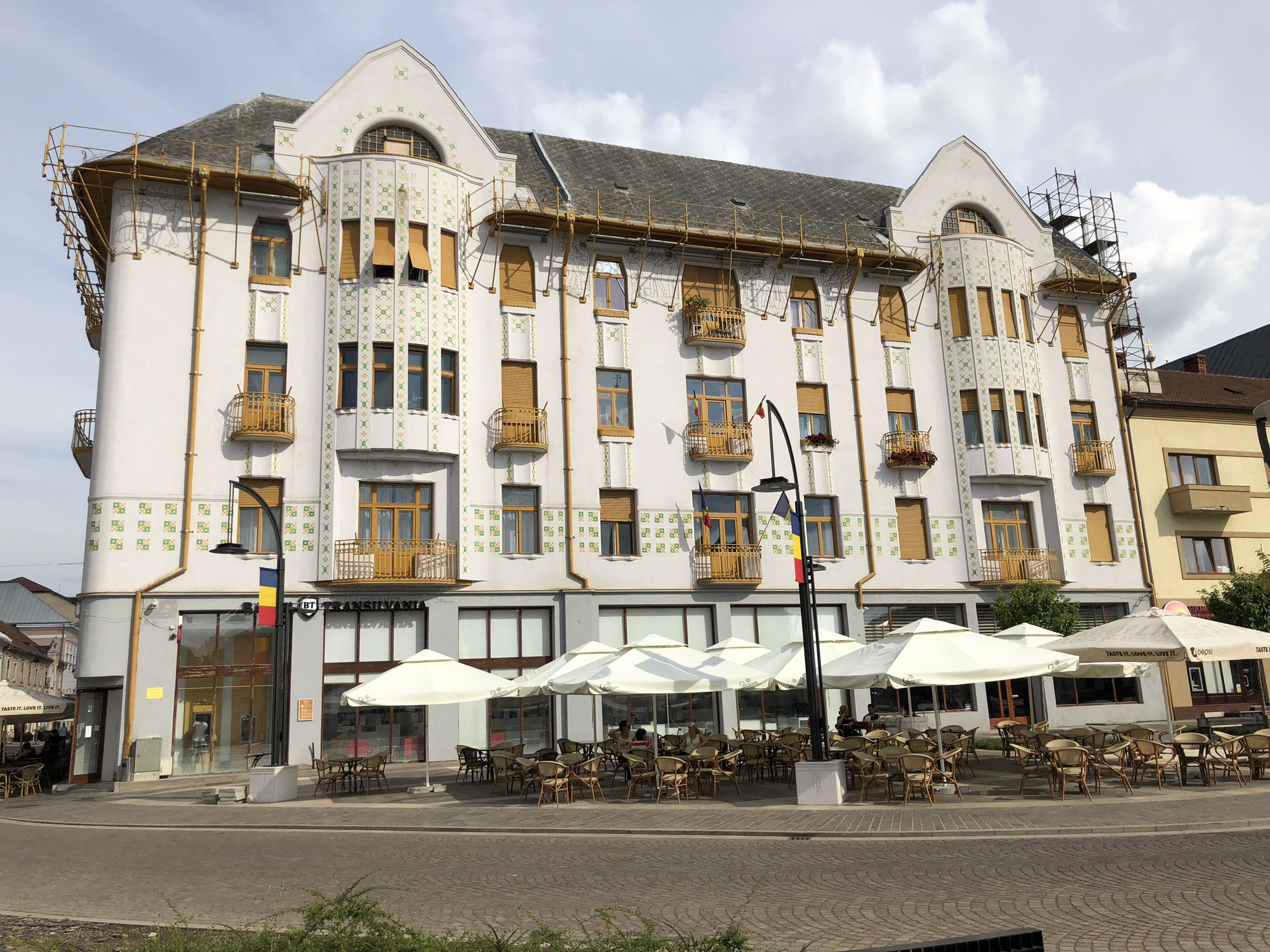
The hotel had provided us with a map, although the lady at reception proved to be even more geographically challenged than Matilda, as when she tried to point out the location of our hotel for us she searched in vain on the wrong side of the river.
Suitably refreshed and armed with the aforementioned map, we left Plata Unirii and walked to the Oradea Fortress, passing the Baptista Elim. This church is still under construction with bare concrete inside and just a few religious paintings hanging from the walls. A woman with a face mask, presumably because of the dust generated by the building work, was vacuuming as people prayed. Oradea certainly accommodates a wide range of religious faiths with many different demoninational buildings to choose from to worship in if you wish.
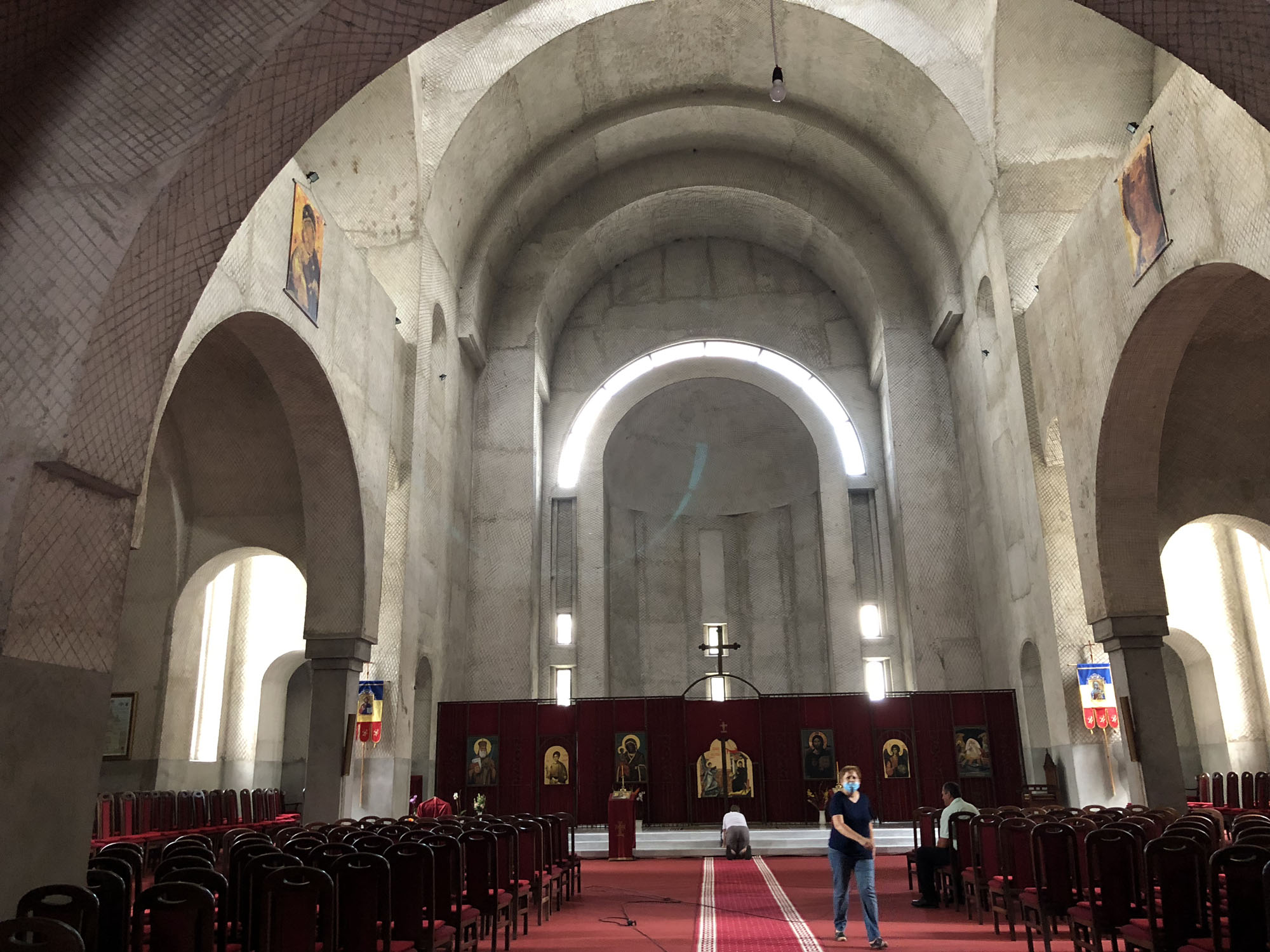
The Fortress is home to the Slovakian Consulate and is also being repaired and renovated, including the laying of block paving. Once finished this will be a beautiful space.
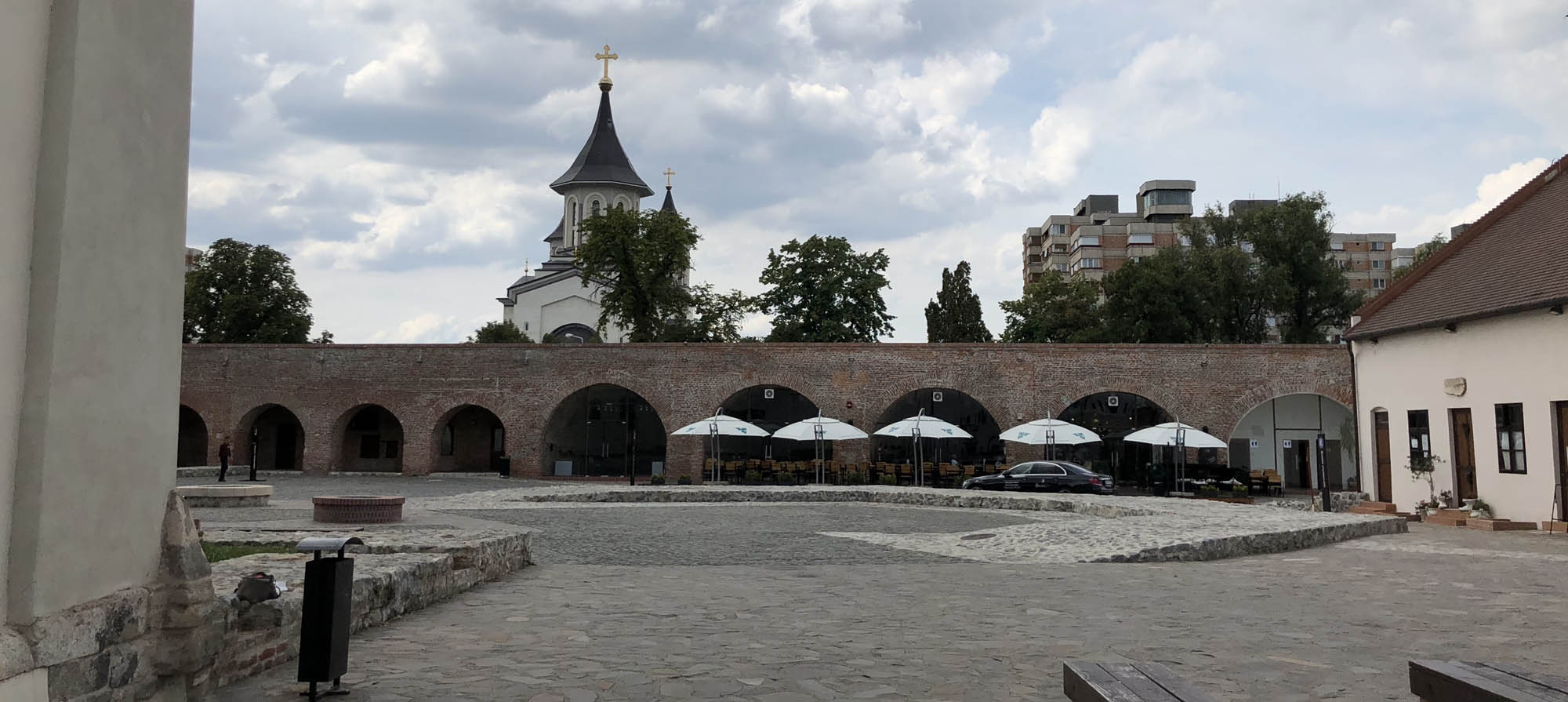
From here we went on in search of the Moskovits Palace on the Republicii Boulevard: a gorgeous art nouveau building painted a striking turquoise, with a polished silver tower roof.
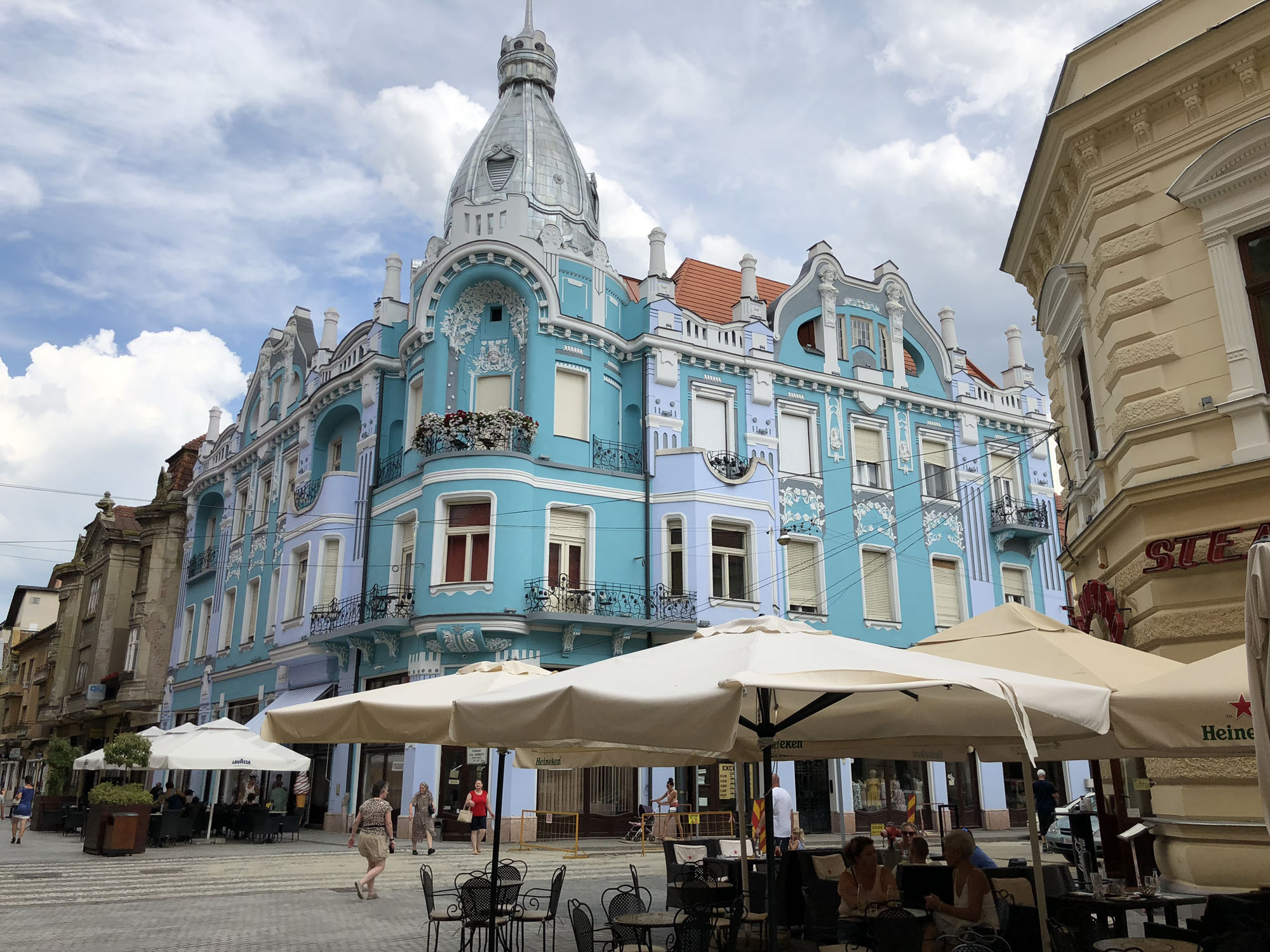
We also returned to Plata Unirii to visit the Church of the Moon, where a baptism was taking place. Although we quietly went inside to take a photo, Robert was predictably critical of a tour party doing the same.
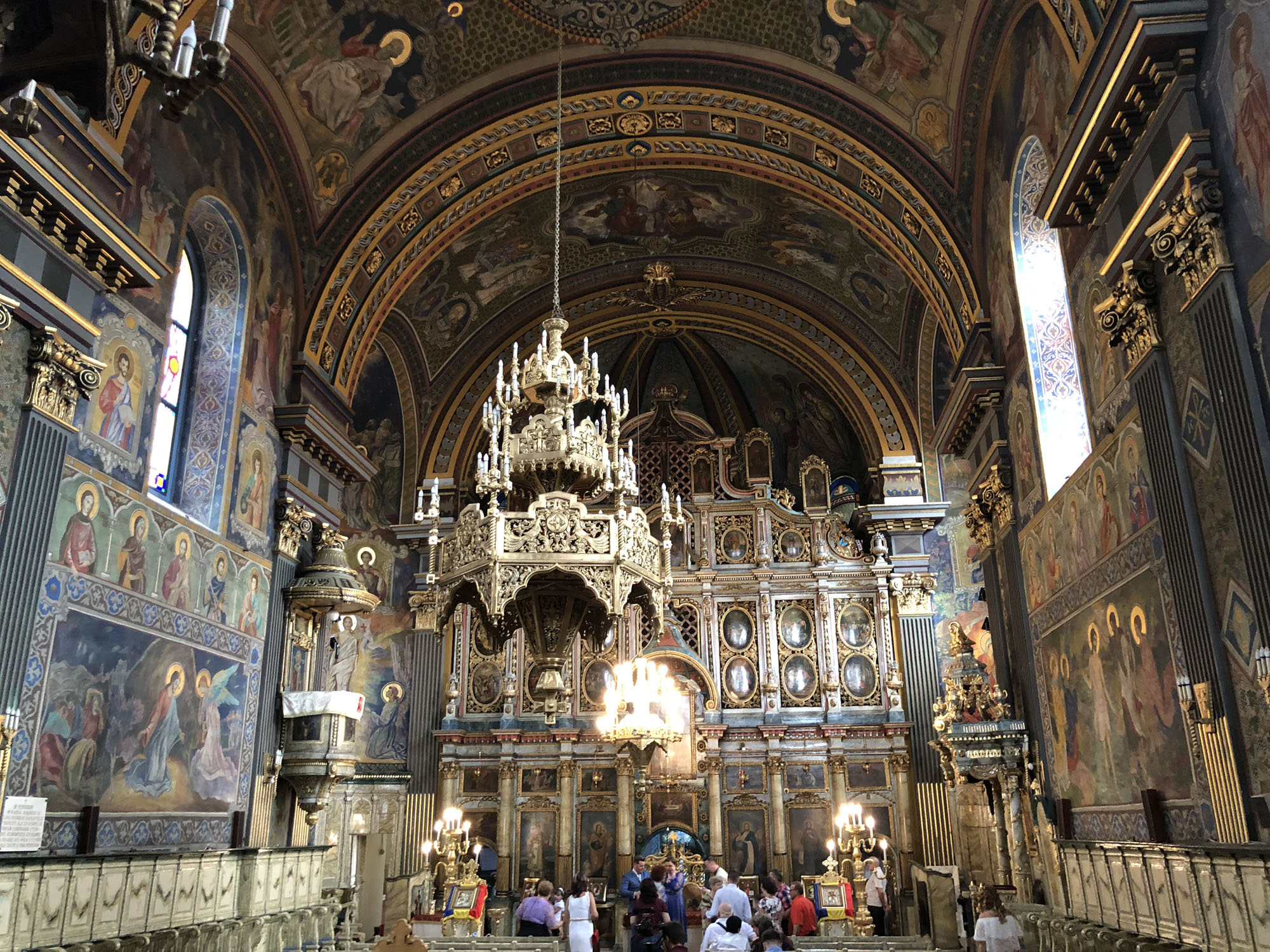
Although lesser-known today, Oradea was used for maps and navigation as the prime meridian [zero degrees] between 1464 and 1667 following the publication of astronomical works by Georg Von Peuerbach. Subsequently Sir George Airy established the prime meridian at the Royal Observatory in Greenwich in 1851 and by 1884 over two thirds of ships used this as their reference meridian on maps on charts.
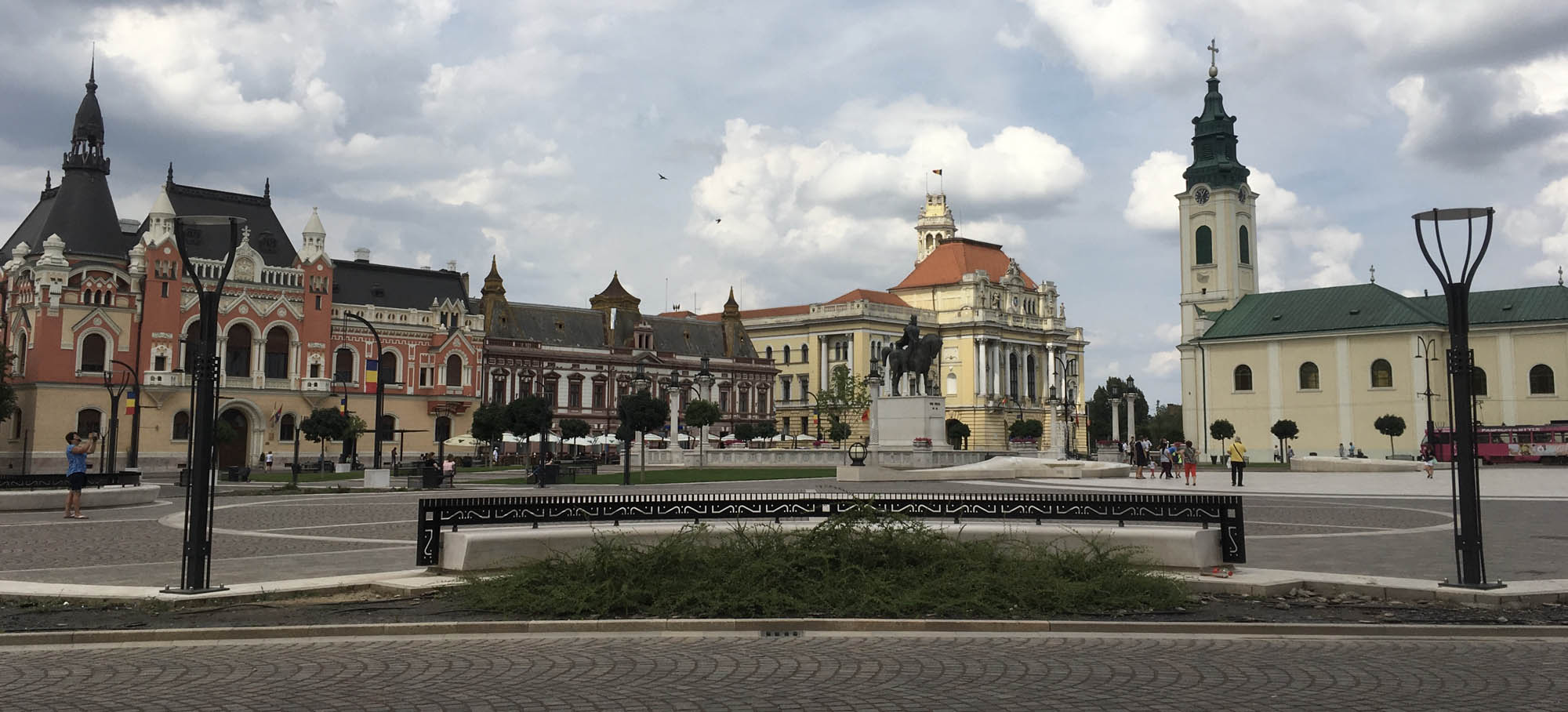
Over the last few years an extensive amount has been done to restore squares and buildings to their former glory. So now you can see a mixture of dereliction and architectural wonders. Interestingly none of the shops are big international chains. In fact, at least half the shops are vacant, the other half has local independent retailers without even shop displays or indications of what they even sell.
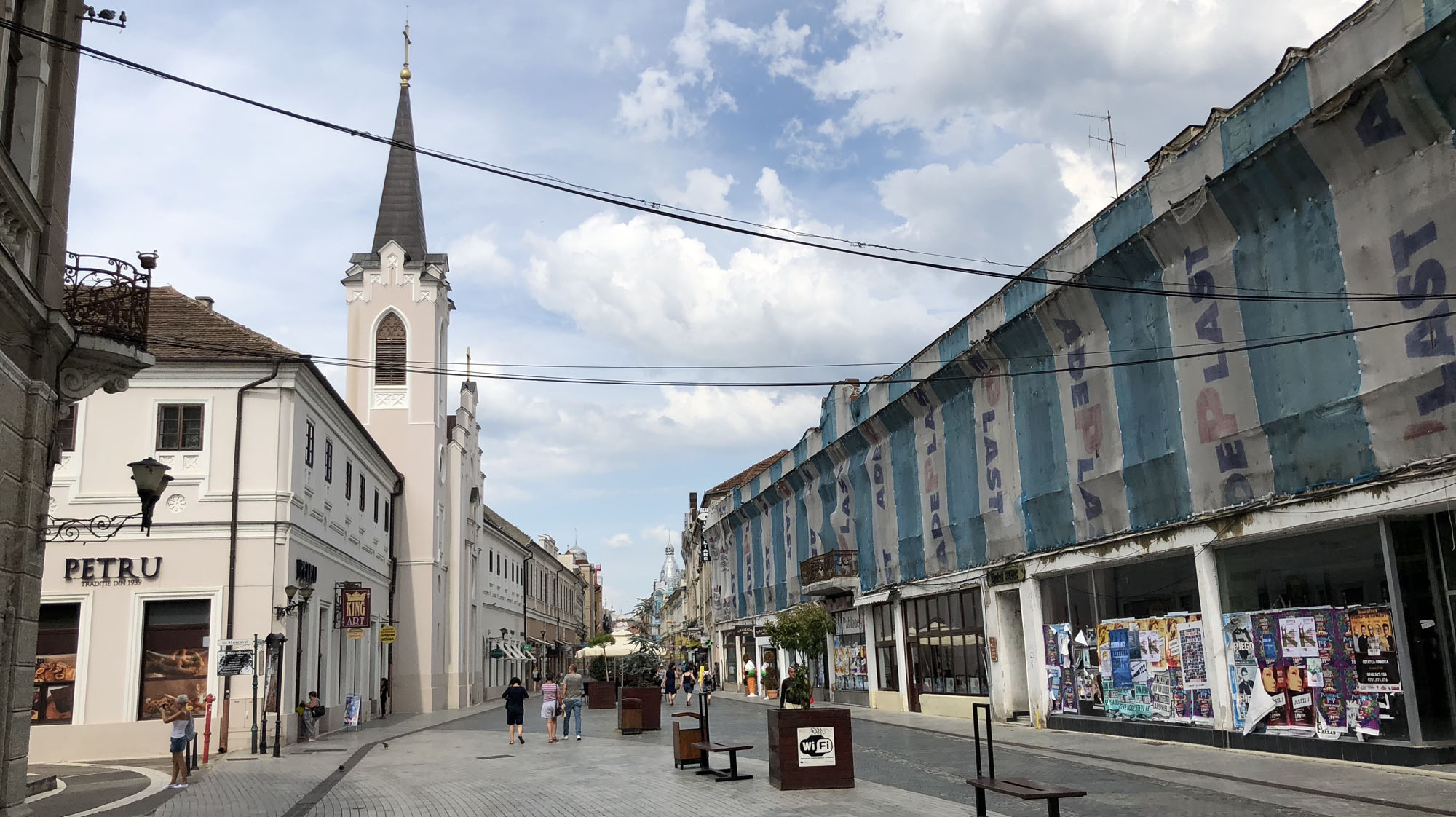
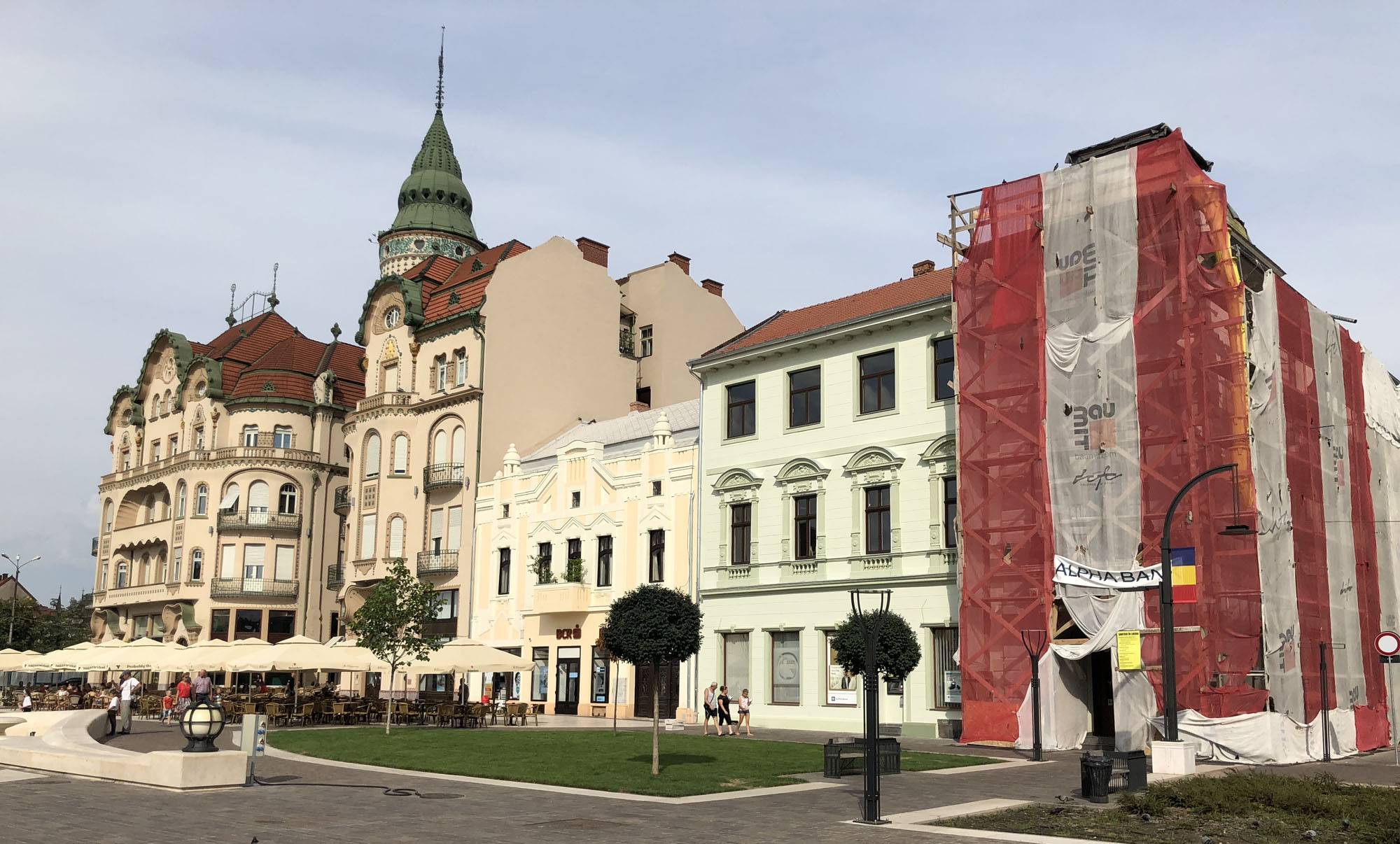
For a Saturday this city is deserted of people. Maybe they have all moved abroad to work. Facinatingly, Oradea is actually the wealthiest city in Romania, with the average GDP here one and a half times that of the rest of Romania. It seems that they are currently trying to create a beautiful international tourist city like Krakow, but they have forgotten to tell the world since no one has turned up yet, not even the obligatory stag dos drinking the £1.30 a pint beer (on the other hand, don’t tell them – you wouldn’t want to ruin it).
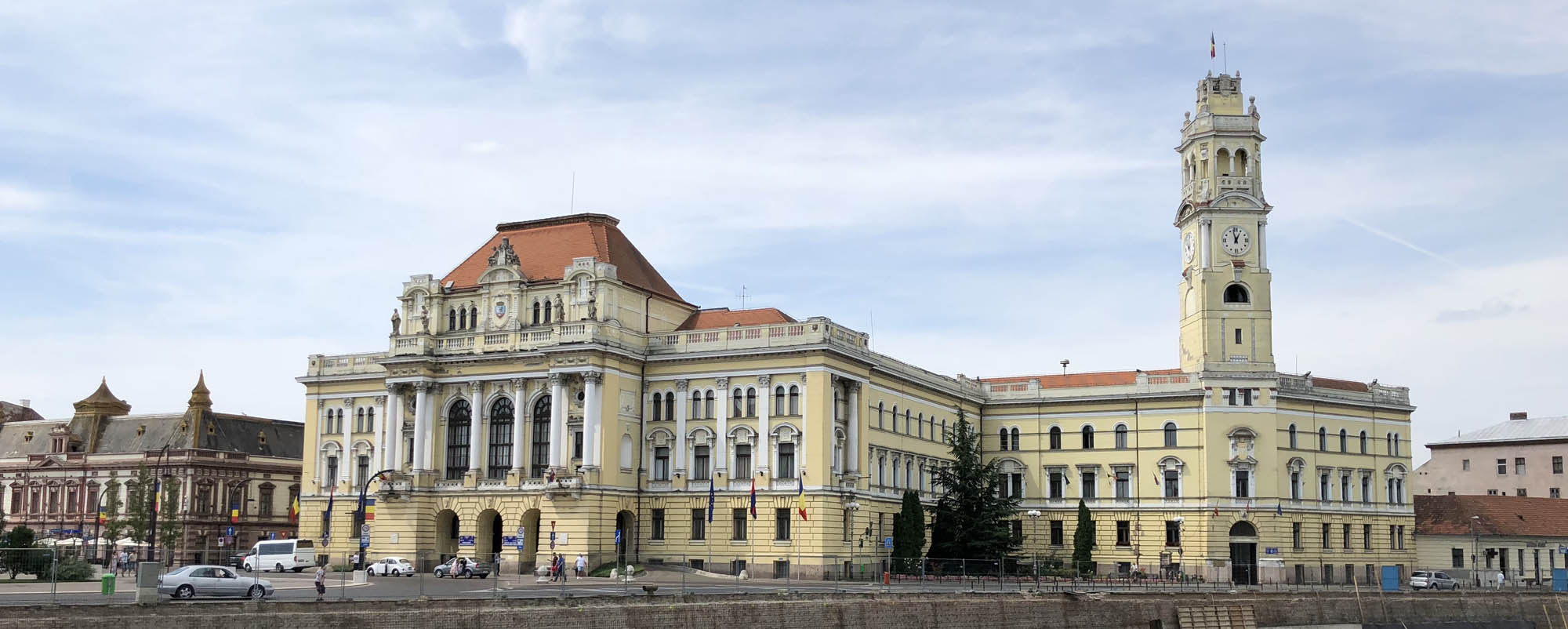
Lesson for the day: Portions here are much larger than at home – one course will suffice.
Miles walked today: 8.5
Route Map:
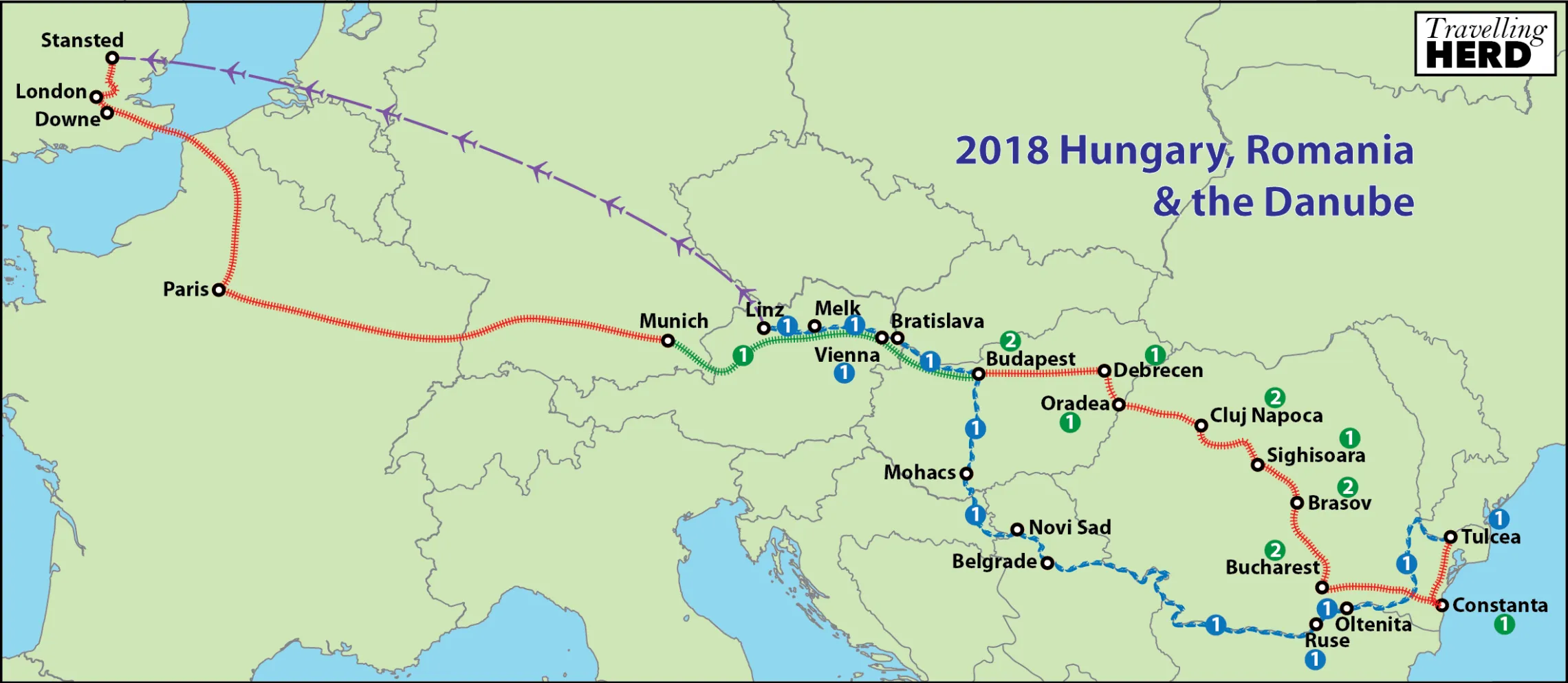






One thought on “Oradea – another time zone away”
An inspiring outlook on life, just my cup of tea. I thought Albanian trains were slow until I read your account! Enjoy the trip.